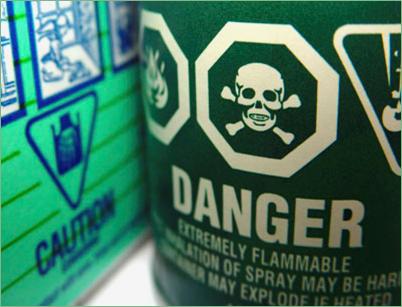Last month, Dr. McInnes presented safety and health concerns associated with some commonly used pesticides. This month, he discusses how the government evaluates and controls the manufacture and use of pesticides.
As I discussed last month, pesticides and herbicides cialis 10mg commonly used by homeowners have been associated with health risks in some studies. This month, let’s examine how the United States oversees these chemical products.
 In the U.S., a manufacturer does not have to prove a product is safe before it can go on the market. Under the Toxic Substances Control Act of 1976, the burden of proof is on the EPA to prove a chemical presents an “unreasonable risk” before it can be banned or restricted. It’s estimated that there are over 80,000 different chemicals in consumer goods. Only a handful have been thoroughly vetted for safety. Only one class of chemicals, PCBs, has been completely banned. A few hundred chemicals have had their uses restricted. The EPA does not buy propecia online without prescription even have the power to ban asbestos, something we’ve known the dangers of for decades—it tried, but the proposed ban was overturned when a court deemed the EPA did not prove the risk from asbestos was “unreasonable.”
In the U.S., a manufacturer does not have to prove a product is safe before it can go on the market. Under the Toxic Substances Control Act of 1976, the burden of proof is on the EPA to prove a chemical presents an “unreasonable risk” before it can be banned or restricted. It’s estimated that there are over 80,000 different chemicals in consumer goods. Only a handful have been thoroughly vetted for safety. Only one class of chemicals, PCBs, has been completely banned. A few hundred chemicals have had their uses restricted. The EPA does not buy propecia online without prescription even have the power to ban asbestos, something we’ve known the dangers of for decades—it tried, but the proposed ban was overturned when a court deemed the EPA did not prove the risk from asbestos was “unreasonable.”
The safety of chemical products is also cast in doubt by manufacturers’ ability to withhold the identities of ingredients from regulating agencies (and the public) by claiming they are trade secrets. Another problem is in the testing. Most of the studies relied on by the EPA to make regulatory decisions have been done by researchers with financial conflicts of interest. It’s unlikely the EPA will be more effective in protecting the public any time soon. Currently the agency has its hands full with political pressure from the fossil fuel industry and its allies in Congress who don’t want any restrictions on the release of climate changing air pollution.
Many countries take a different approach. Regulation is not so tilted in favor of industry. They follow the pre-cautionary principle—a product must be shown to be safe before it can be released on the market. Even some third world countries ban pesticides that are unrestricted here. I’d like to think our government could do a better job protecting us than Ghana’s. Wouldn’t you?
 I urge you to be mindful of the potential dangers posed by pesticides when tackling problems in your landscape and garden. Herbicides and insecticides were designed to kill—don’t assume they are perfectly safe just because you can buy them easily at the hardware store or garden center. Treat them with the respect a dangerous substance deserves. Follow the directions on the label to the letter—not just those on dosage, but also the directions on protective clothing and masks, the timing of application and other cautions. Use them only when you have to—learn to tolerate some imperfections in your landscape, consider less toxic or non-toxic alternatives (see beyondpesticides.org), and inspect often—incipient problems are always easier to correct than ones allowed to get out of hand. And also make sure you’ve got the right weapon for the problem. I’m amazed by how often folks are disappointed that the insecticide they applied didn’t solve the problem they were having with a fungal disease. If you’re not sure what you’re dealing with and what the best solution is, ask a Master Gardener, a reputable garden center, or your county Extension Office.
I urge you to be mindful of the potential dangers posed by pesticides when tackling problems in your landscape and garden. Herbicides and insecticides were designed to kill—don’t assume they are perfectly safe just because you can buy them easily at the hardware store or garden center. Treat them with the respect a dangerous substance deserves. Follow the directions on the label to the letter—not just those on dosage, but also the directions on protective clothing and masks, the timing of application and other cautions. Use them only when you have to—learn to tolerate some imperfections in your landscape, consider less toxic or non-toxic alternatives (see beyondpesticides.org), and inspect often—incipient problems are always easier to correct than ones allowed to get out of hand. And also make sure you’ve got the right weapon for the problem. I’m amazed by how often folks are disappointed that the insecticide they applied didn’t solve the problem they were having with a fungal disease. If you’re not sure what you’re dealing with and what the best solution is, ask a Master Gardener, a reputable garden center, or your county Extension Office.
I also urge you to ask your congressman and senators to support the Toxic Chemicals Safety Act. This bill would limit manufacturers’ ability to hide information about toxic products and would put more of an emphasis on safety in the regulatory process (for more information, see notaguineapig.org).





